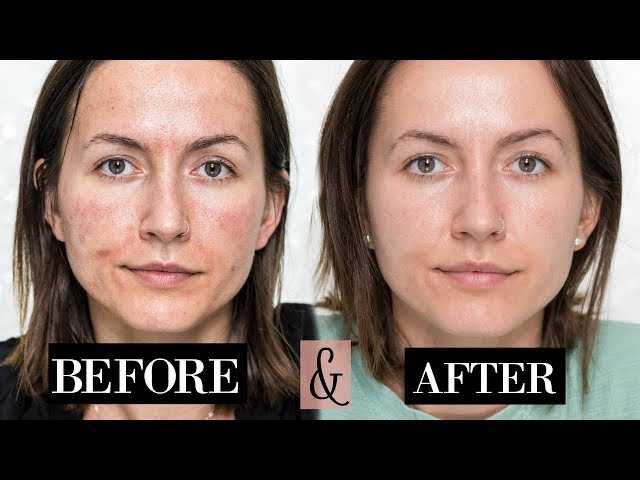Melasma, a common skin condition characterized by brown or gray-brown patches on the face, can be stubborn and emotionally draining. Many people searching for effective treatments have come across a promising solution: microneedling. But once you’ve taken that step, proper aftercare is essential to get the best results. This guide explains how to care for your skin after microneedling for melasma, so your complexion heals beautifully—and the benefits last.
What Is Microneedling and How Does It Help Melasma?
Microneedling is a minimally invasive procedure that uses fine needles to create micro-injuries in the skin. These controlled injuries stimulate collagen production and skin cell turnover. Over time, this can fade pigmentation and improve overall skin texture.
You might be wondering, “Does microneedling help with melasma?“ According to dermatologists and recent studies, microneedling can indeed help reduce the appearance of melasma by breaking down pigment and encouraging new, healthy skin to form. When combined with topical treatments or serums, its efficacy improves further.
However, microneedling is just the beginning. What you do afterward significantly impacts your results.
Immediate Aftercare: The First 24 Hours
1. Skip Makeup and Harsh Products
For the first 24 hours post-treatment, avoid using makeup, exfoliants, or any skincare products that contain acids, retinoids, or alcohol. Your skin is especially sensitive and needs time to breathe.
2. Keep the Skin Clean and Hydrated
Wash your face gently with lukewarm water and a mild, fragrance-free cleanser. Pat your skin dry with a clean towel—no rubbing. Apply a hydrating serum or cream recommended by your dermatologist to lock in moisture.
3. Avoid Sun Exposure
Sun exposure is one of the leading causes of melasma flare-ups. Immediately after microneedling, your skin is more vulnerable to UV rays. Wear a wide-brimmed hat if you need to go outside, but ideally, stay indoors.
Day 2 to Day 5: Healing and Hydration
1. Expect Peeling or Flaking
Some people experience mild flaking or peeling during this time. This is a normal part of the skin renewal process. Do not pick or scratch your skin. Doing so can lead to scarring or even worsen pigmentation.
2. Use Soothing, Anti-Inflammatory Products
Choose products with ingredients like hyaluronic acid, aloe vera, niacinamide, or centella asiatica to calm inflammation and support healing. If you’re questioning, “Does microneedling help with melasma if the skin is inflamed?”, the answer is yes—but only if inflammation is managed correctly post-procedure.
3. Sun Protection Is Mandatory
Begin using a mineral-based sunscreen (SPF 30 or higher) once your skin can tolerate it. Look for sunscreens containing zinc oxide or titanium dioxide, which are gentle and offer strong UVA/UVB protection.
Week 2 Onward: Enhancing Results
1. Incorporate Brightening Agents
After the initial healing phase, your dermatologist may recommend products with ingredients like vitamin C, azelaic acid, kojic acid, or tranexamic acid. These compounds help fade pigmentation and prevent melasma recurrence.
Again, this is where the keyword query “Does microneedling help with melasma” becomes relevant: Yes, but combining it with the right skincare regimen post-treatment makes it even more effective.
2. Stay Consistent With Your Routine
To maintain and build upon your microneedling results, consistency is key. Stick with a dermatologist-approved routine that includes hydration, pigmentation control, and sun protection.
Common Mistakes to Avoid After Microneedling for Melasma
❌ Using Active Ingredients Too Soon
Applying retinol, exfoliants, or acids too early can irritate the skin and reverse the benefits of microneedling.
❌ Skipping Sunscreen
Even brief sun exposure can trigger melasma. Sunscreen should become a non-negotiable part of your daily skincare routine.
❌ Ignoring Skin Signals
If your skin feels tight, itchy, or inflamed beyond the typical healing phase, speak to your provider. It may be a sign of sensitivity or infection.
How Many Sessions Are Needed for Melasma?
Microneedling for melasma typically requires multiple sessions—usually 3 to 6 treatments spaced 4–6 weeks apart. Some patients notice a visible improvement after just one or two sessions, but cumulative results are where the real magic happens.
It’s essential to manage expectations. Microneedling can significantly reduce melasma but may not completely eliminate it. Combining microneedling with topical agents and excellent aftercare maximizes results.
Professional vs. At-Home Microneedling for Melasma
While at-home microneedling devices exist, they are not recommended for treating melasma. Professional treatments use medical-grade needles and sterile conditions to safely reach the depth necessary for melasma pigment disruption. If you’re considering this treatment, consult a licensed dermatologist or aesthetician.
As the question “Does microneedling help with melasma?” continues to trend online, the best results come from clinical settings with expert guidance.
Final Thoughts: Long-Term Melasma Management
Microneedling can be a game-changer in melasma treatment, especially when paired with proper post-care. But to truly manage melasma long-term, it’s about lifestyle choices, consistency, and regular dermatological oversight.
Here’s a quick recap:
-
Yes, microneedling helps with melasma, especially when performed by professionals.
-
Post-care matters just as much as the procedure itself.
-
Sun protection is your number one defense.
-
Stick with a gentle, pigment-fighting skincare routine.



